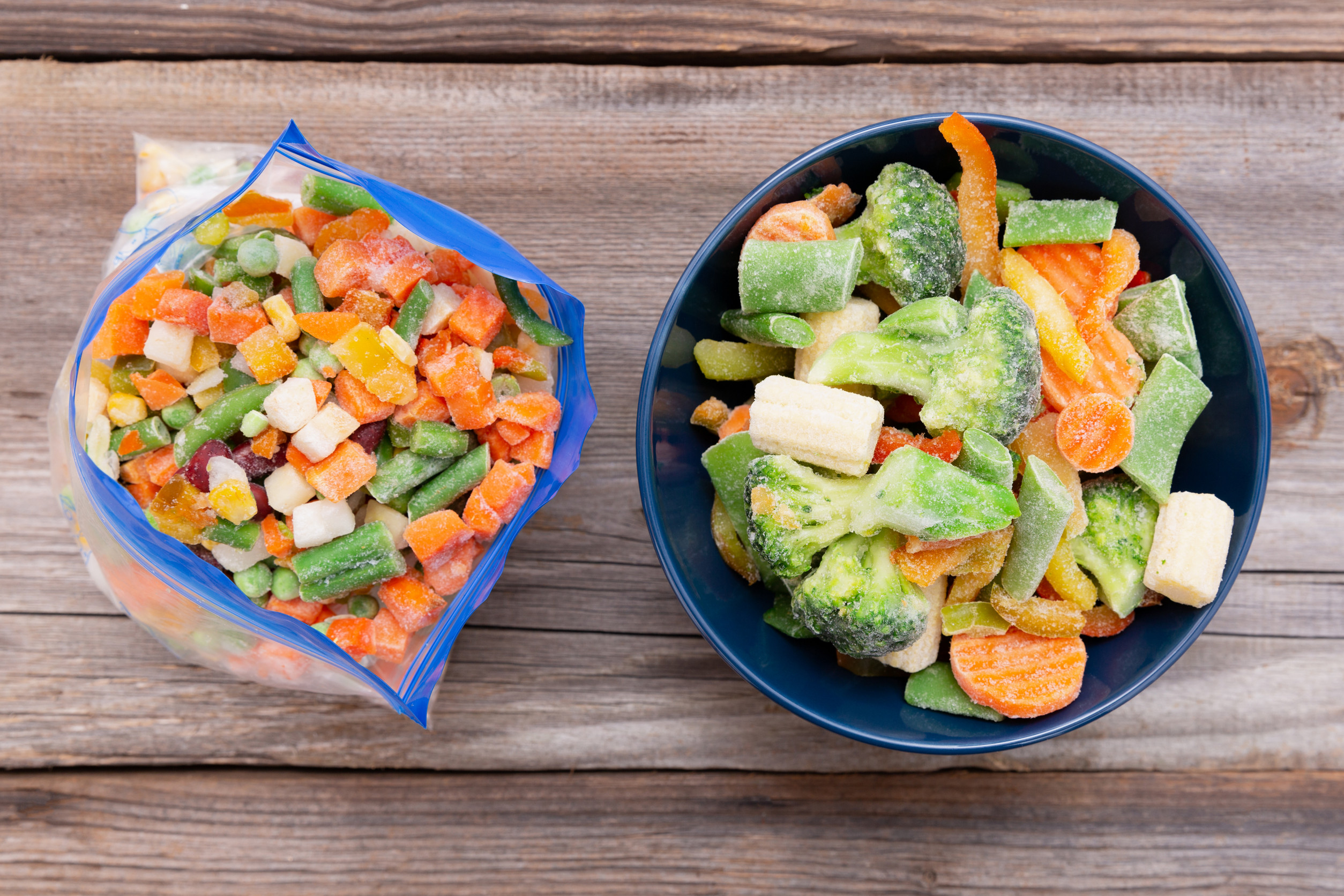
Many people think frozen vegetables are completely safe from harmful bacteria, but that’s not always the case. While freezing stops bacteria from growing, it doesn’t necessarily kill it. This means that if the vegetables were contaminated before freezing, the bacteria can survive until they’re cooked—or eaten. Recent food recalls have shown that some frozen vegetables are more prone to contamination than others, especially with Listeria and Salmonella. Knowing which varieties carry the highest bacteria risk can help you store, prepare, and cook them more safely.
1. Frozen Spinach
Frozen spinach is a healthy staple, but it’s also been linked to multiple Listeria-related recalls. The large surface area of spinach leaves makes it easier for bacteria to cling during harvesting and processing. If not thoroughly washed before freezing, contamination can persist for months in your freezer. Because spinach is often used in smoothies and dips without being fully cooked, the risk of illness increases. Always heat frozen spinach thoroughly before eating to kill any potential bacteria.
2. Frozen Corn
Frozen corn might seem harmless, but it has been involved in several major foodborne illness outbreaks. The kernels can trap bacteria in their crevices, making them harder to clean during processing. Corn is also one of the vegetables sometimes eaten straight from the freezer in salads or as a topping, which skips the cooking step that kills bacteria. Listeria has been a recurring concern with frozen corn recalls in recent years. Cooking it thoroughly before eating is the safest approach.
3. Frozen Peas
Frozen peas are popular for their convenience, but they’ve been implicated in Salmonella and Listeria contamination cases. Because they’re small and round, they can roll through processing lines quickly, increasing the chance that some escape proper cleaning. Like corn, peas are sometimes thawed and eaten without cooking, especially in pasta salads. This increases the risk if the product was contaminated before freezing. Boiling or steaming peas before eating eliminates most of the danger.
4. Frozen Broccoli
Frozen broccoli can carry harmful bacteria due to its tightly packed florets, which can trap dirt and microbes. Washing broccoli thoroughly before freezing is challenging, and any surviving bacteria can remain dormant in the freezer. Listeria can survive at freezing temperatures and reactivate once the broccoli thaws. Since broccoli is sometimes lightly cooked or stir-fried for short periods, bacteria may not be fully killed. Ensuring it reaches a safe cooking temperature is essential.
5. Frozen Mixed Vegetables
Frozen mixed vegetables—often containing carrots, peas, corn, and beans—can have a higher risk simply because multiple ingredients are processed together. If one component is contaminated, it can affect the entire batch. Mixed vegetables are frequently used in quick meals where cooking times are short, which might not be enough to destroy harmful bacteria. Some mixes also contain precooked ingredients, leading consumers to believe they’re safe to eat as-is. Always cook mixed vegetables thoroughly before serving.
6. Frozen Green Beans
Frozen green beans have been linked to Listeria recalls in the past. The long, thin shape of beans can make them tricky to clean completely, and bacteria can survive freezing conditions. Green beans are also common in quick sautés or steamed dishes where cooking times are minimal. Without enough heat exposure, bacteria may survive and cause illness. A full boil or steam to the recommended internal temperature can greatly reduce the risk.
7. Frozen Asparagus
Frozen asparagus isn’t as common as other frozen vegetables, but it still carries a bacteria risk. Its tips can trap moisture and microorganisms during harvesting and processing. Asparagus is often cooked lightly to preserve texture and flavor, which may not be enough to eliminate harmful bacteria if present. In recent years, some frozen asparagus products have been recalled due to Listeria contamination. Cooking asparagus thoroughly is the best way to ensure it’s safe to eat.
Safe Handling Makes All the Difference
While frozen vegetables are a healthy and convenient choice, they’re not immune to bacterial risk. Products like spinach, corn, peas, and mixed vegetables have all been linked to past food recalls. The best protection is to cook them thoroughly—boiling, steaming, or roasting until they reach a safe internal temperature. Avoid eating frozen vegetables straight from the freezer unless they’re specifically labeled as ready-to-eat. By practicing proper food safety, you can enjoy the benefits of frozen vegetables without the hidden hazards.
Have you ever been surprised by a frozen vegetable recall? Which ones do you always cook before eating? Share your thoughts in the comments.
Read More
10 Frozen Items That Were Thawed and Sold as Fresh
5 Frozen Meal Brands Accused of Misleading Claims
The post 7 Types of Frozen Vegetables That Carry the Highest Bacteria Risk appeared first on Grocery Coupon Guide.







